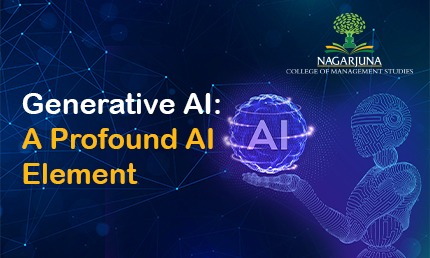
Nowadays, artificial intelligence is a prime topic of discussion in the fields of science and technology. This advancement in technology can be a boon that aids improvement or a curse that prevents further growth enhancement.
Different types of artificial intelligence support development in various ways, which unlock new opportunities and possibilities. Among these AIs, generative AI has captured a large audience in a short period. Also known as Gen AI, it can create and showcase a wide variety of data, like photos, videos, text, 3D models, and audio, with just a prompt presented by the user.
Let’s explore the nuances of generative AI!
Exploring Generative AI: History, Applications & Concerns
· History: A View of the Journey
Generative AI isn’t a new notion; it has been around since the 1960s. This type of AI was first introduced by Joseph Weizenbaum through his creation of Eliza Chatbot, a conversation simulator. It showcased the technology that stimulated conversations with humans in solving their queries, developed using the SLIP (Systematic List Processor) programming language at MIT.
Further, generative AI resurfaced in 2010 with the development of neural networks and deep learning fields.
In 2014, Ian Goodfellow introduced Generative Adversarial Networks (GANs), a machine learning algorithm with two neural networks known as generators and discriminators. The GAN model represents a competitive pattern between the two neural networks that enables them to learn and adapt without any supervision.
These innovations and advancements enabled the Gen AI to solve complex problems within seconds. Through this technology, one can create art or even generate an informational outcome with just a specification and a click.
· Applications: Exploring the Positive Side
Generative AI is an excellent tool to ease the workflow. It generates high-quality results within a shorter period, which adds to the time-saving initiative and efficiency at work.
The applications of generative AI in day-to-day life are:
- Chatbots for unruffled customer service
- Template creations for email responses, resumes, and term papers
- Refined product demonstration videos
- Generation of high-quality art in the form of visual, audio, video, and text
- Optimising the content, audio, and visuals for a realistic experience
- Improving and enhancing the current industry standards
· Concerns: The Loopholes in the Programme
Even though Generative AI has been an efficient tool, there are a few drawbacks to the arrangement that may affect the final product or cause issues like plagiarism, rights violations, and many more.
Some of the concerns are:
- Inaccurate and misleading information
- Information from an unknown source that minimises the trust and dependability quotient
- Generation of fake news with the help of Gen AI
- Plagiarised content that overlaps with and ignores the rights of the legitimate owner
- Effects on current business models and algorithms working around SEO and digital marketing
These concerns can be solved with the upgrade of the tool. Therefore, technological advancement plays a significant role in closing these loopholes.
As interesting as the concept seems, it is just the beginning of artificial intelligence. Explore more about the technology and dive deep into the world of AI with the BCA Course on AIML offered by Nagarjuna College of Management Studies, a prominent management institution in Bengaluru affiliated with Bengaluru North University. Do Check it Out!
Happy Learning!!
